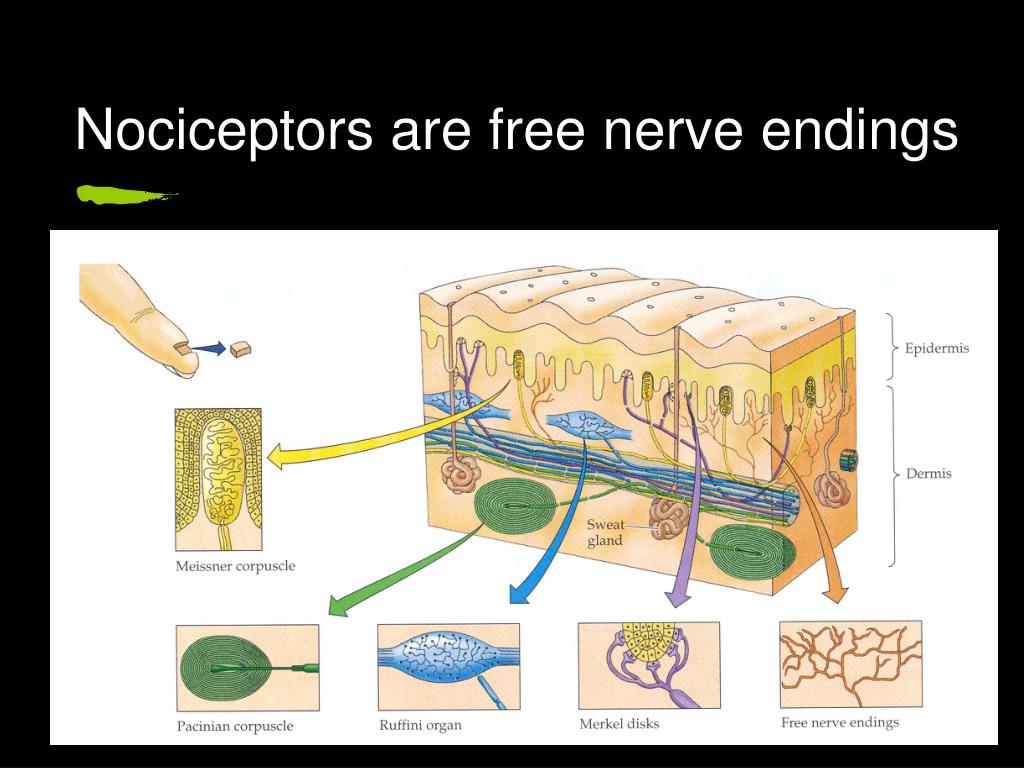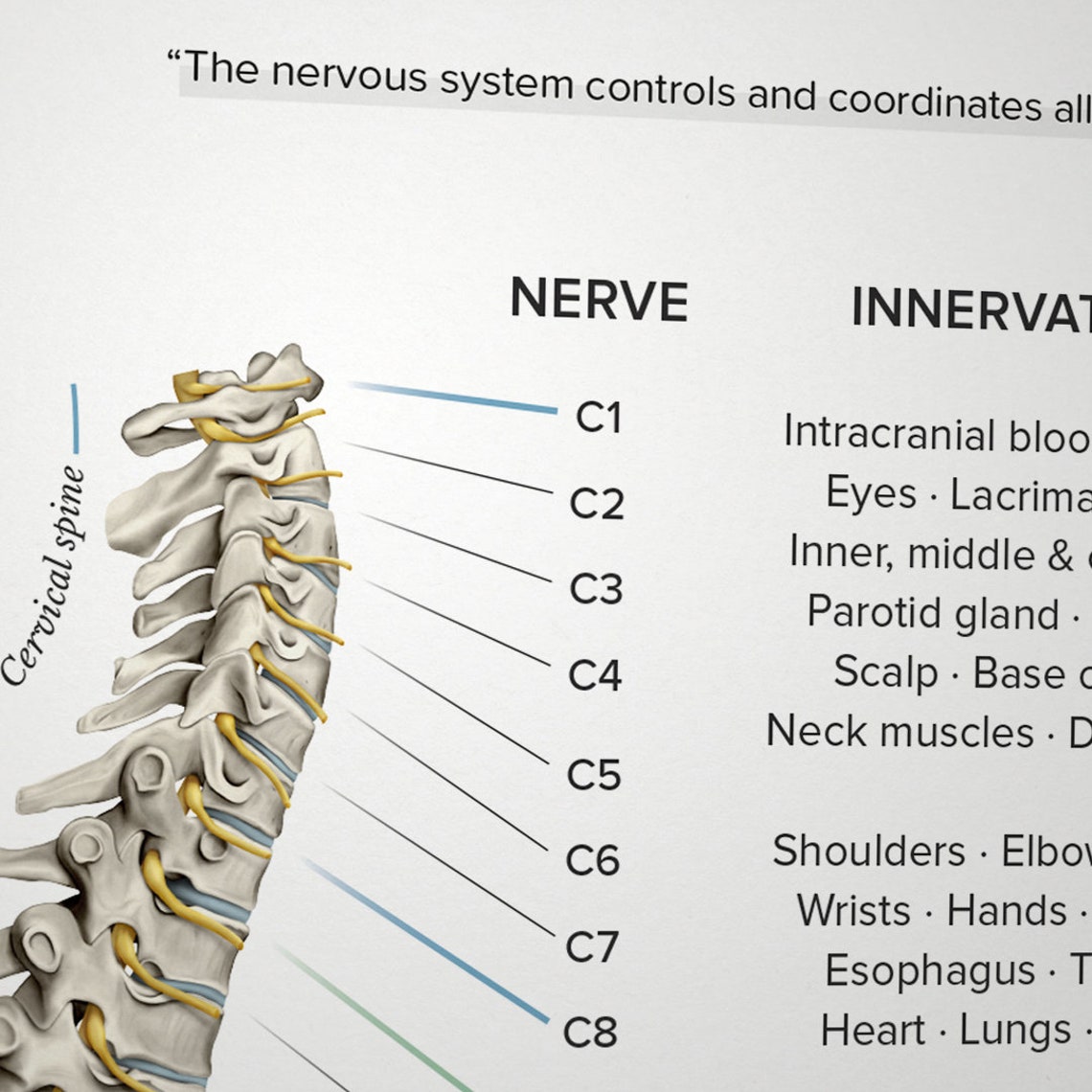
It is specifically responsible for development of the peripheral nervous system (PNS). The neural crest is responsible for a large part of early development in vertebrates. Nociceptors develop from neural-crest stem cells. The axons extend into the peripheral nervous system and terminate in branches to form receptive fields. The trigeminal ganglia are specialized nerves for the face, whereas the dorsal root ganglia are associated with the rest of the body. The cell bodies of these neurons are located in either the dorsal root ganglia or the trigeminal ganglia. Internal nociceptors are found in a variety of organs, such as the muscles, the joints, the bladder, the visceral organs, and the digestive tract.
EXAMPLES OF NERVE ENDINGS SKIN
External nociceptors are found in tissue such as the skin ( cutaneous nociceptors), the corneas, and the mucosa. In mammals, nociceptors are found in any area of the body that can sense noxious stimuli.

The specific receptors for these intense stimuli were called nociceptors. Some intense stimuli trigger reflex withdrawal, certain autonomic responses, and pain. Sherrington used many different experiments to demonstrate that different types of stimulation to an afferent nerve fiber's receptive field led to different responses.

In earlier centuries, scientists believed that animals were like mechanical devices that transformed the energy of sensory stimuli into motor responses.

Nociceptors were discovered by Charles Scott Sherrington in 1906. The brain creates the sensation of pain to direct attention to the body part, so the threat can be mitigated this process is called nociception. A nociceptor ("pain receptor" from Latin nocere 'to harm or hurt') is a sensory neuron that responds to damaging or potentially damaging stimuli by sending "possible threat" signals to the spinal cord and the brain.


 0 kommentar(er)
0 kommentar(er)
